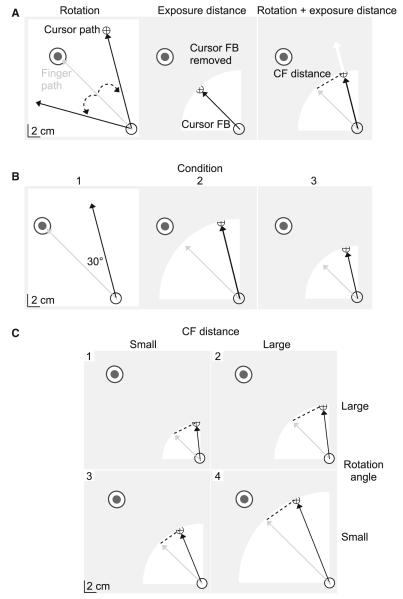Fig. 2.
Experimental manipulations. Each frame depicts the start location (open circle), target location, finger path (gray arrow), screen cursor (cross-hair), and/or cursor path (black arrow). a Visuomotor rotations introduced a discrepancy in cursor and finger information by rotating the screen cursor, indicating index fingertip position, relative to the start location by a specified angle (dotted arrow; left). Cursor exposure distances controlled the amount of error information in each trial by limiting cursor feedback to within a certain distance from the start location (white; middle). When the visuomotor rotation and cursor exposure distance were applied simultaneously, participants were required to extrapolate from previous cursor information in order to fully compensate for the rotation (white arrow; right). Additionally, the distance between the cursor and finger (CF distance; dotted line) varied systematically with the amplitude of the cursor exposure distance and rotation angle. b Experiment 1. All perturbation trials were rotated by 30°, such that each condition varied by the amplitude of the cursor exposure distance. The first three conditions are shown. c Experiment 2. A small (4 cm; left) and large (6 cm; right) CF distance was created by rotating the cursor by either a large (top; 39°) or small (bottom; 23°) rotation angle

